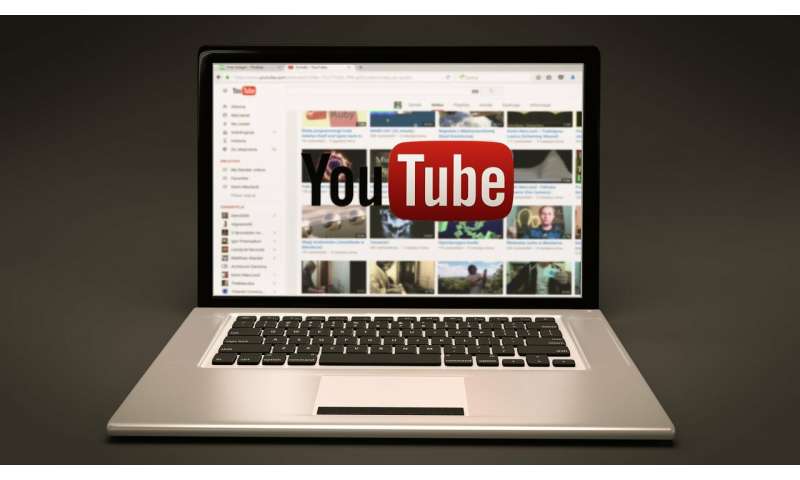
Mention YouTube to a parent, and you get several thoughts. At best, it's a babysitter and an educational resource.
Yet it's also a site to be wary of, first, because children under the age of 13 are prohibited from even watching, per the user policy. (Ignored by many parents.) Then there is the avalanche of hate videos and the company's run-ins over comments that exploit children, videos that harass people and the like.
So what to do for YouTube in 2020? Look to see an even bigger push on its most acclaimed feature, learning.
Anyone can learn how to do anything on YouTube, taught by real teachers, average people, company-made productions and now big-ticket, YouTube-financed videos, starring people such as Robert Downey, Jr., Michelle Obama and author James Patterson.
On YouTube, everyone's a teacher, or so it seems. Have trouble with a toilet that's running? Someone has a tutorial on how to fix it. Everything from math comprehension to how to fly a drone and fix a cracked iPhone screen is out there, most from your neighbor's living rooms.
Now the former first lady has a Book Club. Downey teaches about artificial intelligence. Daniel Schiffman, a professor at New York University, teaches coding, and YouTuber Marques Brownlee is doing a retrospective on antique tech devices. YouTube reached into the best of its learning videos to create playlists at youtube.com/learning to show how to start a business, learn math and fact-check the Internet.
YouTube touts the Learning section as a place to find the "best how to, DIY, tutorial, and educational videos on YouTube."
In other words, instead of relying on the traditional anything goes method, YouTube programmers curate and choose the cream to showcase the kind of videos YouTube wants to be known for.
Will it eliminate the stench from that $170 million fine by the Federal Trade Commission and New York attorney general for what they said was collecting information about children without their consent? In response, YouTube cracked down on abuses within its children's related programming (its most popular genre) by eliminating comments, shedding many channels and requiring creators to identify if their programming targets kids.
"YouTube had to do this," says Joshua Cohen, the editor of TubeFilter, a website that tracks online video, about the Learning initiative. "It's a great PR move and lets YouTube talk about the more positive aspects of the service."
It's not just altruism at work. YouTube's CEO, Susan Wojcicki, is the daughter of two teachers. Her mom teaches high school English and journalism, and her dad is a Stanford University physics professor. It runs in the family.
There's a big incentive for people to post how-to videos to YouTube. People who make them get paid. YouTube rewards creators with a following (minimum: 1,000 subscribers, plus 4,000 hours of watch time in a 12-month period) with a share of the advertising revenue generated.
For the Learning initiative, Katie Kurtz, YouTube's director of content partnerships, says YouTube seeks "highly credible" educators who have used the platform for awhile, who can create "trustworthy, authentic" content that will "further enhance the learning experience" on YouTube.
How popular is education on YouTube? Kurtz says hundreds of millions people come to YouTube to learn, and about 4 billion hours of how-to videos were watched on YouTube last year.
Still, education videos take a backseat to the more popular music videos and children's videos that generate the most views, Cohen says. "The vast majority of science and education videos don't get huge views" individually, he says, but when added together, they do generate a sizable audience.
Gregory Brown has produced science content for his ASAPScience YouTube channel since 2012. A former science teacher, he started making videos on the side, and the work took off fast, enabling him to quit his day job and focus full-time on YouTube.
When the company asked Brown and partner Mitchell Moffit to be part of the Learning initiative, he was thrilled. Since science videos aren't as popular as a music video or funny cat moment, "this really helps," he says, "to make sure we're financially thriving."
Unlike YouTube's "Partner" program, in which anyone can gain a following, apply to share in ad revenue and start making money, the Learning channel isn't open to all. Creators need to work hard, make great videos, develop a rapport with the audience and be consistent.
Then YouTube may find you and ask you to join the program, which is heavily promoted and thus more likely to find mega-viewers.
One tool that will be open to everyone creates Learning playlists to showcase how-tos in a curated fashion. YouTube offered it to select creators this year and will open it to the wider community in 2020, Kurtz says.
The playlists can be built like a traditional lesson plan, from beginning to advanced, and won't be littered, Kurtz says, with the YouTube algorithm that offers "suggested" videos to watch. "We know that would be distracting."
It's that algorithm that got YouTube in trouble in the first place, when it began suggesting hate and conspiracy videos to consumers of news content.
(c)2019 U.S. Today
Distributed by Tribune Content Agency, LLC.
Citation: YouTube will shine even more attention on learning in 2020 (2019, December 26) retrieved 26 December 2019 from https://techxplore.com/news/2019-12-youtube-attention.html
This document is subject to copyright. Apart from any fair dealing for the purpose of private study or research, no part may be reproduced without the written permission. The content is provided for information purposes only.
